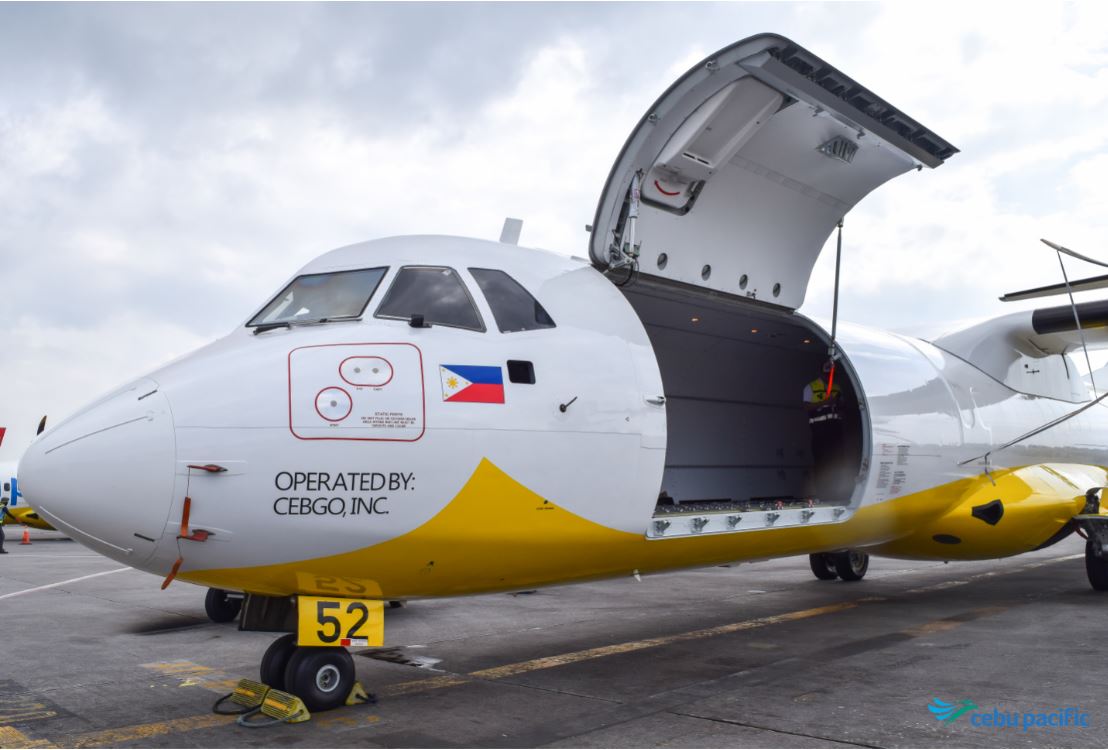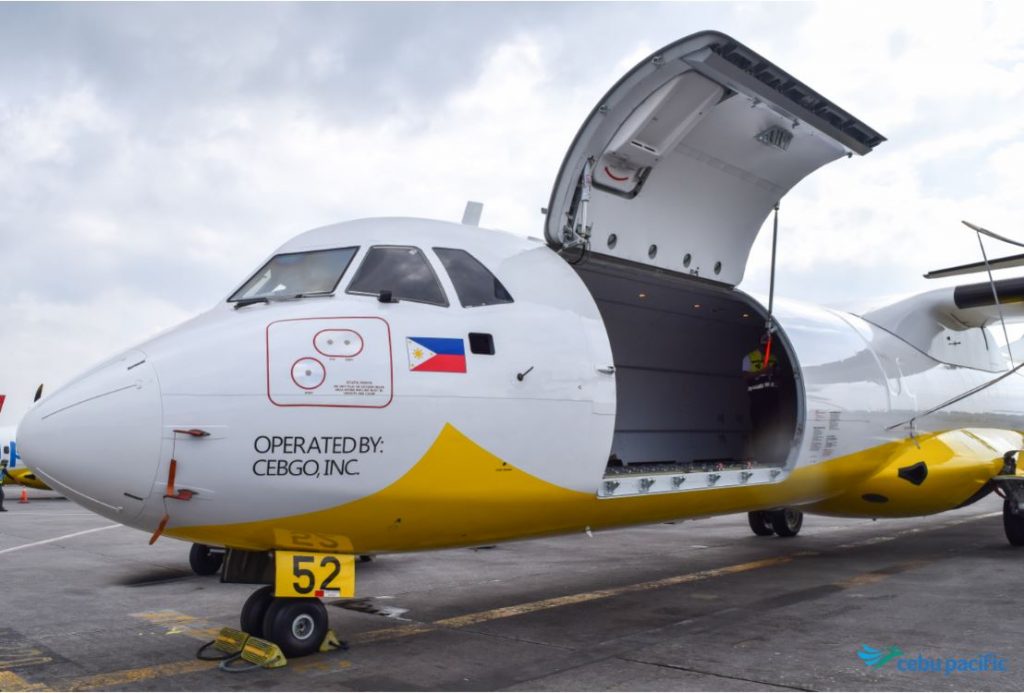

Cebu Pacific’s 76-aircraft fleet welcomed the arrival of the second ATR converted freighter (P2F) in the line-up as the Philippines’ largest carrier looks to boost its growing cargo operations.
The converted ATR 72-500P2F joins two other dedicated cargo aircraft in its fleet. Cebu Pacific recently modified one of its A330-300 into an all-cargo configuration by removing seats to hold cargo in the main deck.
Cebu Pacific is responding to growing demand for ‘affordable’ air transport of cargo as its cargo operations try to ease the impact on the passenger side. In Q3, its cargo business accounted for 66 percent of revenue, as compared to only 8 percent for the same period last year.
The carrier transported over 43,600 tonnes of domestic and international cargo since the onset of the pandemic in March, with flights to Hong Kong, Dubai, Japan, Thailand, Shanghai and Guangzhou. It also transported over 278 tonnes of humanitarian cargo, free-of-charge, to domestic destinations.
Also read: Cebu Pacific taps Lufthansa Cargo unit to manage ULD fleet
Despite the impact of the pandemic which saw the airline resort to a capital raising exercise to stay liquid, Cebu Pacific is staying agile by exploring other revenue streams through its cargo efforts.
“We expect cargo operations to continue growing as we reprioritize and utilise our existing aircraft fleet to respond to the increased demand,” said Alex Reyes, vice president for commercial, Cebu Pacific.
“Besides pivoting to focus more on cargo operations, we are also mobilising our aircraft to give back to the community by working closely with government agencies, organisations, and partners to ensure logistics support is fully covered,” he added.
Over the course of the pandemic, the airline organised over 270 sweeper flights domestically to bring home stranded travellers, and partnered with various groups to provide free transport of medicines, test kits and PPEs to several provinces.










